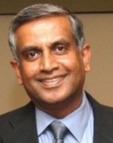



Spokane, Washington
Photo Courtesy of Visit Spokane
Sponsored by the IEEE Reliability Society
Program
Welcome to 2024 IEEE Conference on Prognostics and Health Management
Spokane, Washington
June 17-19, 2024
ICPHM 2024 will be a hybrid event and remote presentation will be an option
Keynotes
"PHM and ATS – An Unconventional Combination"
Keynote speaker: Dr. John Sheppard

Bio:
" Dr. John Sheppard is a Norm Asbjornson College of Engineering Distinguished Professor of Computer Science at Montana State University and previously was the RightNow Technologies Distinguished Professor in Computer Science at MSU. Recently, he was named Interim Director of MSU's Center for Science, Technology, Etchics, and Society (C-STES). He holds a BS in computer science from Southern Methodist University and an MS and PhD in computer science from Johns Hopkins University. In 2007, he was elected as an IEEE Fellow "for contributions to system-level diagnosis and prognosis." Prior to entering academia, he was a Fellow at ARINC Incorporated, a defense aerospace company in Annapolis, MD where he worked for almost 20 years. Dr. Sheppard performs research in probabilistic graphical models, deep learning, evolutionary and swarm-based algorithms, distributed optimization, and applications to system-level test, diagnosis, and predictive health. Recently, his research has expanded into the areas of prostate cancer diagnosis, precision agriculture, and wildfire management. He has published over 200 papers in peer-reviewed conference proceedings and journals as well as two books on the subject of system-level diagnosis. In addition, Dr. Sheppard is active in IEEE Standards activities where, currently, he serves as the chair of the IEEE P2848 Prognostics and Health Management for Automatic Test Systems standards development working group under SCC20. He is also a member of the IEEE P2976 eXplainable AI standards working group. "
Abstract:
" Much work has been done in recent years advance technology and standards in Prognostics and Health Management. This work has addressed issues in mechanical, hydraulic, and structural PHM, and more recently, considerable attention is being given to electronic PHM as well. Even so, the majority of work that has been done has been in the context of “on-platform” PHM, focusing on sensors, data acquisition, data processing, modeling, and prediction. In the commercial and military aerospace community, however, additional information about the health of a system is collected “off-platform” through general and specialized support equipment, called automatic test equipment. In this talk, I provide an overview of work going on with the Department of Defense in terms of the creation and management of an Automatic Test Systems Framework and describe a current initiative underway developing a new IEEE standard for PHM and ATS. I also introduce work being done through support from the DoD to develop tools to support PHM in the context of the ATS Framework. "
"Building Trust through Blockchain: Revolutionizing Healthcare Data and Supply Chain Security"
Keynote speaker: Dr. Sanmeet Kaur

Bio:
" Dr. Sanmeet Kaur is a highly accomplished and dedicated Associate Professor in the fields of Computer Science and Cyber Security. Holding a Ph.D. in Computer Science and Engineering with a specialization in Network Security in 2015, she boasts a rich academic background, including a master’s degree in software engineering and a Bachelor's in Computer Applications. With over two decades of professional experience, Dr. Kaur currently serves as an Associate Professor at Eastern Washington University, USA. Her expertise spans diverse domains, including Network Security, Precision Agriculture, Machine Learning, IoT, and Blockchain.
Throughout her career, Dr. Kaur has made significant contributions to the academic and research spheres. She has authored numerous publications in high-impact peer-reviewed Science Citation indexed Journals, successfully supervised Ph.D. and graduate students, and actively participated in research projects funded by prestigious organizations. Her commitment to excellence extends to the realm of teaching, where she has earned accolades for her innovative curriculum development and student engagement strategies. Dr. Kaur is not only a respected educator but also a valuable member of various academic and professional committees, solidifying her position as a thought leader in her field.
"
Abstract:
" In recent years, the Internet of Medical Things (IoMT) has played a significant role in the healthcare industry. It has not only empowered medical services to handle complex real-time functions but has also greatly enhanced patient monitoring, benefitting patient care and medical research. Hence, there is a need to ensure that the data received from various sensors stay secure. Considering these advancements in the healthcare industry, concerns have arisen regarding the protection of sensitive medical data within the IoMT framework. Blockchain offers transparent, immutable, and decentralized data storage and its versatility holds the potential to reshape the IoMT framework. It can facilitate personalized and secure patient data management, revolutionize traditional healthcare practices, establish robust data-sharing mechanisms, enhance pharmaceutical supply chain management’s efficiency, and enable the traceability of drugs. Integrating IoMT and blockchain technologies holds significant promise for maximizing their advantages within the healthcare sector, ranging from enhanced data security and integrity to streamlined interoperability and transparency. This integration fortifies the robustness of healthcare data management. It facilitates the seamless sharing and traceability of medical information, ultimately improving patient care and heightened trust within the healthcare ecosystem.
To bridge the gap between theory and practice, the BlockMedHealth framework is proposed—a lightweight, decentralized real-time monitoring and prescription management system. This framework utilizes IoMT and blockchain technology to store Electronic Health Records (EHRs) securely, ensuring data integrity, anonymity, and interoperability. Performance evaluations demonstrate BlockMedHealth's effectiveness in processing and storing Remote Patient Monitoring (RPM) data. In addition to that, a framework based on a secure consortium blockchain that prioritizes data privacy and employs time-based authentication to streamline patient data monitoring. The findings of this research work indicate that the proposed solution effectively enhances the management of IoMT data by providing improved privacy and security.
Blockchain technology is also transforming supply chain security, in addition to the healthcare industry. In another related research, we explore two blockchain-based methodologies to address privacy, traceability, and counterfeiting within the supply chain sector. The first methodology employs a permissioned blockchain with a Centralized Data Store (CDS) whereas the second methodology introduces a comprehensive blockchain system with Proof of Elapsed Time (PoET) consensus and advanced privacy algorithms, successfully addressing privacy concerns and safeguarding against counterfeiting. From securing medical data to combating counterfeits in the supply chain, these innovations promise a future where transparency, security, and efficiency converge for the betterment of industries and the well-being of individuals.
"
"Transforming Health Care Through Digital Revolutions"
Keynote speaker: Dr. Ram D. Sriram

Bio:
" Dr. Ram D. Sriram is currently the chief of the Software and Systems Division, Information Technology Laboratory, at the National Institute of Standards and Technology. Before joining the Software and Systems Division, Sriram was the leader of the Design and Process group in the Manufacturing Systems Integration Division, Manufacturing Engineering Laboratory, where he conducted research on standards for interoperability of computer-aided design systems. Prior to joining NIST, he was on the engineering faculty (1986-1994) at the Massachusetts Institute of Technology (MIT) and was instrumental in setting up the Intelligent Engineering Systems Laboratory. Sriram has co-authored or authored nearly 300 publications, including several books and videos. Sriram was a founding co-editor of the International Journal for AI in Engineering. Sriram received several awards including: an NSF’s Presidential Young Investigator Award (1989); ASME Design Automation Award (2011); ASME CIE Distinguished Service Award (2014); the Washington Academy of Sciences’ Distinguished Career in Engineering Sciences Award (2015); ASME CIE division’s Lifetime Achievement Award (2016); CMU CEE Lt. Col. Christopher Raible Distinguished Public Service Award (2018); IIT Madras Distinguished Alumni Award (2021) and the IEEE Reliability Soceity’s Lifetime Achievement Award (2023). Sriram is a Fellow of AAIA, ACM, AIBME, ASME, AAAS, IEEE, IET, INCOSE, SMA, and Washington Academy of Sciences, a Senior Member (life) AAAI, and an Honorary Member of IISE. Sriram has a B.Tech. from IIT, Madras, India, and an M.S. and a Ph.D. from Carnegie Mellon University, Pittsburgh, USA.
"
Abstract:
" Healthcare in the 21st century will be transformed by various digital revolutions. Of particular importance will be four revolutions: 1) Artificial Intelligence/Machine Learning (AI/ML); 2) Omics; 3) Virtual Reality/Augmented Reality (VR/AR); and the 4) Internet. Artificial Intelligence (AI) is concerned with the development of computer programs that emulate the intelligence of humans, i.e., AI is deeply concerned with the understanding of human problem-solving strategies and incorporating (or simulating) these strategies into computer programs. The “Omics” paradigm can be viewed as the study of a domain in a massive scale, at different levels of abstraction, in an integrative manner. VR and AR integrate the physical and virtual worlds and provide an immersive experience for the human. The Internet, which has spanned several networks in a wide variety of domains, is having a significant impact on every aspect of our lives. The P9 medicine concept -- personalized, predictive, preventive, participatory, pervasive, precise, privacy-preserving, protective, and priced reasonably – forms the basis for a digital health framework. In this talk, I will discuss the P9 concept and its manifestation in the various digital revolutions, with a plan for an implementation strategy for digital wellness, which can be viewed as the use of information technology for ensuring robust physical and mental health.
"
Tutorials
"Improving Source-Code Representations to Enhance Search-based Software Repair"
Tutorial speaker: Dr. Antonio Espinoza

Bio:
" Dr. Espinoza is professor at Eastern Washington University who received his Ph.D. at the University of New Mexico in 2019. His areas of expertise are diverse and include: censorship, automated program repair, n-versioning of microservices, and dynamic information flow tracking. The diversity of Dr. Espinoza’s work stems from interdisciplinary study at various labs across the country. Having worked closely with social scientists at the Citizen Lab during graduate studies, the SPARK lab at UT Austin and the Center for Biocomputing, Security and Society Lab at ASU, he’s had the opportunity to cultivate familiarity with a breadth of subfields in computer security.
"
Abstract:
" Automatically improving and repairing software using search-based methods is an active research topic. Many current systems use existing source code as the ingredients of repairs, either through evolutionary computation derived random mutation or other heuristic operators. However, these code transformation operators are not always well-matched to the granularity of the source code on which they operate. This tutorial will provide an overview of the automated program repair landscape and discuss a tool to improve automated program repair tools via a static source-to-source preprocessing step to produce code with more uniform granularity that exposes relevant program components to the repair process. Additionally the tutorial will investigate applications of automated program repair to produce more fault tolerant code utilizing the byproduct of automated program repair, diversity.
"
"Role of PHM in Autonomous Decision-Making: Aerospace applications"
Tutorial speaker: Dr. Portia Banerjee

Bio:
" Dr. Portia Banerjee is a diagnostic and prognostic research engineer working with the Intelligent Systems Division at NASA Ames Research Center, CA [KBR]. She completed her Ph.D. degree in Electrical and Computer Engineering from Michigan State University, USA and Bachelor of Technology degree in Electronics and Communications Engineering from National Institute of Technology Durgapur, India. She has been associated with nondestructive evaluation and prognostics research in automotive, avionics and energy system applications for over ten years and have published in several journals and conference papers. Her research interests include physics-based modeling, statistical signal processing, data mining, uncertainty management and reliability analysis tailored towards diagnostic and prognostic applications in structures and autonomous systems. She is currently working on integrated health monitoring and risk assessment of unmanned aviation and space systems. She is a member of the AIAA, IEEE and PHM societies, Executive Committee member of ASME NDE Diagnosis and Prognosis Division and a Board of Director at ASNT Golden Gate section. Portia received the NASA Ames Honor Award in 2021 for her contribution towards developing physics-based models for accurate risk assessment in emerging aerospace applications.
"
Abstract:
" There is an increased need for onboard decision-making capabilities in cyber-physical systems be it in energy, automotive, aviation, space, or other industries as they aim for increased efficiency, resiliency, and mission assurance capabilities. Emerging next-gen technologies such as multi-rover planetary missions, distributed satellites, unmanned ground and aerial vehicle operations and smart grid systems rely on in-time risk assessment and autonomous decision-making. One critical piece of the autonomy puzzle is reliable prediction of system behavior under time-varying and potentially uncertain environmental conditions. Further, if agent states change during operation such as initiation of faults or degradation, reliable diagnostic tools need to be investigated. In this tutorial, we will revise approaches that integrates existing physics-based and data-driven models of agents interacting with probability models of the environment and component operation state. Role of existing PHM methodologies as they feed into decision-making under uncertainty will be studied. Balancing critical trade-offs between high-fidelity prognostic models, prediction time-horizons and the computational requirements for in-time cost-effective decision-making will be discussed through the implementation of surrogate models. Finally, the audience will be introduced to a real-time application of in-time trajectory planning of an unmanned aerial system (UAS) based on its PHM assessments under uncertain and varying wind conditions.
"
"Communication Matters in Prognostics and Health Management"
Tutorial speaker: Dr. Alan Chong

Bio:
" Alan Chong is an Associate Professor in the Institute for Studies in Transdisciplinary Engineering Education and Practice (ISTEP) and the Director of the Engineering Communication Program at the University of Toronto. His work is motivated by the belief that strong and clear communication underlies successful engineering and technological practices, and that communication instruction must be deeply embedded within specific engineering disciplinary contexts. Reflecting this belief, his teaching and research focuses on best practices for integrating discipline specific communication instruction into core engineering curricula. Additionally, he examines studies prominent failures in communication to the non-experts and the public about science, using them as teaching cases in his courses on Science Communication.
He also currently serves as the president of the IEEE Professional Communication Society, and is a Fellow of the Canadian Engineering Education Association.
"
Abstract:
" The successful adoption of PHM technologies and strategies will depend on our ability to communicate effectively with end users and the public, particularly around the importance of being prepared for technological failures. But communicating to non-experts about uncertainty, product safety, reliability and risk can present significant challenges, as recent public responses to climate change, pandemic risk, and other health scares have shown. In this tutorial, we explore how these failures in science communication have impacted the public’s understanding of science and their response to risk in these areas, then examine the communication strategies that led to these poor outcomes. In particular, we interrogate some prominent assumptions that are often made about non-expert audiences, specifically the idea that the public is homogenous, with similar goals, background knowledge, and purposes for learning about technology.
Acknowledging this error, we introduce the concept of “Framing Science” as a corrective, which argues that in order to communicate effectively with the public, scientists and researchers need to do more than learn techniques for “dumbing-down” or “translating" their research while maintaining accuracy: they need to find ways to make complex topics more personally relevant to end users. Without these connections, non-expert audiences are not compelled to engage with and understand technical information, nor to act on the advice of scientific experts. We conclude by laying out key strategies for: (1) understanding an audience’s needs and background; (2) finding relevant approaches to engage non-experts in topics relevant to Prognostics and Health Management; and finally, (3) deploying the right rhetorical techniques (eg. narrative, metaphor, etc.) to ensure that the public understands how PHM research can better manage their relationship to medical and other technologies.
"
"Data-Driven Modelling Patterns for Designing and Implementing Digital Twins in Prognostics and Health Management Systems"
Tutorial speaker: Dr. Concetta Semeraro

Bio:
" Dr. Semeraro is Assistant Professor at the University of Sharjah, United Arab Emirates (UAE) in Industrial and Management Engineering Department. She got her double Ph.D. in June 2020 in Industrial Engineering at Polytechnical University of Bari (Italy) and in Computer Science at University of Lorraine (France), SUMMA CUM LAUDE (FIRST CLASS HONORS). She was postdoc at the University of Lorraine (France). She obtained her Bachelor's and Master's degrees in Industrial and Management Engineering at Polytechnical University of Bari (Italy). She is an expert on Digital Twin, Industry 4.0 and 5.0, Modelling and Simulation, Data Analysis, Machine learning and Artificial Intelligence to improve processes' efficiency and smartness. Her main research areas are: Digital Twin design and implementation on manufacturing processes, energy storage and renewable energy systems. "
Abstract:
" The Digital Twin (DT) is a highly promising technology within the digital transformation realm. It is a virtual replica of a physical system that mirrors its behavior. The emulation forecasts potential breakdowns and openings for change, offering real-time recommendations and optimizing or managing unexpected occurrences. Crafting this virtual model involves a complex process reliant on substantial data and precise models that accurately mirror reality. Currently, this modeling approach varies based on the specific use case, necessitating a tailored solution for virtual reality modeling within the digital twin framework. A reference methodology/approach for DT design and implementation in Prognostics and Health Management Systems will be presented, centered around the concept of "modeling patterns" and their inherent consistency. These patterns, conceived as data-driven, can autonomously derive from data through a specialized approach aimed at achieving a consistent trait. This enables their application and reuse across modeling scenarios or problems of varying degrees of similarity. The efficacy of these consistent modeling patterns is showcased through real industrial case studies where a dedicated DT was constructed utilizing the proposed approach Prognostics and Health Management reasons.
"
"Personalized Medicine: Deep Learning and Foundation Models for Reliable Medical Diagnosis and Prognosis"
Tutorial speaker: Dr. Arash Mohammadi

Bio:
" Dr. Arash Mohammadi received the B.Sc. degree from the ECE Department, University of Tehran, Tehran, Iran, in 2005, the M.Sc. degree from the BME Department, Amirkabir University of Technology (Tehran Polytechnic), Tehran, in 2007, and the Ph.D. degree from the EECS Department, York University, in 2013. From 2013 to 2015, he was a Postdoctoral Fellow with the Multimedia Laboratory, ECE Department, University of Toronto. He is currently an Associate Professor with the Concordia Institute for Information Systems Engineering (CIISE), Concordia University, Montreal, QC, Canada. He is a registered Professional Engineer in Ontario. Currently he is the Program Chair of 2024 IEEE International Conference on Human-Machine Systems (ICHMS), and is on the editorial board of IEEE Signal Processing Letters and Scientific Reports (Nature). He was the Director of Membership Developments of IEEE Signal Processing Society (2018–2021), and the General Co-Chair of 2021 IEEE International Conference on Autonomous Systems (ICAS). Additionally, he was a member of the Organizing Committee of 2023 IEEE Intelligent Vehicles Symposium (IV 2023), the 2021 IEEE International Conference on Acoustics, Speech and Signal Processing (ICASSP), and the 2021 IEEE International Conference on Image Processing (ICIP). He was a recipient of several distinguishing awards, including the Eshrat Arjomandi Award for outstanding Ph.D. dissertation from EECS, York University, the 2022 Concordia University Research Award of Excellence, the 2018 Concordia President’s Excellence in Teaching Award, and the 2019 and 2022 Gina Cody School of Engineering and Computer Science’s Research awards. "
Abstract:
" The landscape of Personalized Medicine (PM) stands at a critical crossroads, marked by both unprecedented high-risk challenges and transformative high-reward opportunities, stemming in part from recent breakthroughs in Artificial Intelligence (AI). Unlike the traditional approach of focusing solely on tumor features, PM targets tailoring treatments based on tumor, environmental, lifestyle, and/or patient molecular profiles. The ultimate objective of PM is reshaping diagnosis/prognosis and treatment effectiveness prediction for development of reliable therapies. In this defining stage of PM evolution, on the one hand, identification, detection, and recognition of biomarkers (at the molecular or cellular levels) play a crucial role. On the other hand, due to the diversity of patient profiles, reliable prediction of individual responses to medications represents a major hurdle in PM. A paradigm shift has, therefore, swept through the medical community, moving from traditional disease-focused approaches to data-centric and computational disease identification. Deep Neural Networks, in particular, Foundation Models (FMs) are posed to become pivotal in recognizing disease patterns, tailoring treatment plans, and enhancing prognosis accuracy. Unlike conventional DNNs, FMs can delve into patient-disease correlations, positioning themselves as an indispensable and integral part of the PM concept. Our discourse begins by exploring reliable radiomics feature extraction using DL and FMs, illustrating how these computational models reliably learn latent patterns and textures from medical images, translating them into quantifiable insights. The effectiveness of this approach in various medical applications, ranging from oncology to neurology, will be showcased, emphasizing its potential in revolutionizing patient prognosis and treatment planning.
"
"Reinforcement Learning in Reliability and Maintenance Optimization"
Tutorial speaker: Dr. Yu Liu
.jpg)
Bio:
" Dr. Yu Liu is the Dean and Full Professor of the School of Mechanical and Electrical Engineering at the University of Electronic Science and Technology of China. He received his PhD degree in Mechatronics Engineering from the University of Electronic Science and Technology of China. He was a Visiting Pre-doctoral Fellow in the Department of Mechanical Engineering at Northwestern University, Evanston, U.S.A. from 2008 to 2010, and a Postdoctoral Research Fellow in the Department of Mechanical Engineering, at the University of Alberta, Edmonton, Canada from 2012 to 2013. He has published two Springer books and over 90 peer-reviewed papers in international journals, such as IEEE Transactions on Reliability, IISE Transactions, Naval Research Logistics, European Journal of Operational Research, Reliability Engineering and System Safety. He has been recognized as one of the Most Cited Chinese Researchers by Elsevier since 2016 and the World’s Top 2% Scientists since 2020. He was a recipient of the Chang Jiang Scholars Program Distinguished Professors, National Science Fund for Excellent Young Scholars, IISE QCRE Teaching Award, the Youth Science and Technology Award of Operations Research Society of China, the Youth Science and Technology Award of Sichuan Province, and the HIWIN Doctoral Dissertation Award sponsored by Chinese Society of Mechanical Engineers and HIWIN Technologies Corporation. He serves as an Associate Editor of IISE Transactions and IEEE Transactions on Reliability and one of the editorial board members of Quality and Reliability Engineering International, International Journal of Reliability, Quality and Safety Engineering, and Chinese Journal of Aeronautics. He also serves as the Vice President of the Reliability Committee of Operations Research Society of China. He is an ISEAM Fellow and a senior member of IEEE Reliability Society."
Abstract:
" Reinforcement learning is a critical paradigm in artificial intelligence that enables an agent to learn optimal behaviors through trial-and-error interactions with environments. It exhibits significant potential for solving complex decision-making problems in engineering scenarios and has been regarded as a transformative approach within the reliability and maintenance optimization community. This talk will introduce the theoretical foundations of reinforcement learning, as well as its applicability and advancements in reliability and maintenance optimization. It will provide a comprehensive tutorial on applying reinforcement learning to address reliability and maintenance optimization problems, including Markov decision processes modeling, design and implementation of reinforcement learning algorithms, and case studies of engineering instances. Additionally, challenges and future directions associated with the application of reinforcement learning in reliability and maintenance optimization will be discussed.
"
Panels
"IEEE PHM Standards Development Status and Plans to Collaborate with SAE"
Panelists: Lou Gullo, Rex Sallade, Dr. John Sheppard
Abstract: "The panel will discuss their involvement in developing standards for PHM, such as IEEE 1856, the Standard Framework for Prognostics and Health Management of Electronic Systems, and the potential to develop future standards that align with IEEE 1856, such as proposed standard, IEEE P1856.1, a guideline or recommended practice for PHM systems. This panel will be a continuation of the topic discussed in the Tutorial session on IEEE PHM Standards at the conference prior to this panel session. Within the system health management community, there are several different interpretations of the term “prognostics”, such as prescriptive maintenance, predictive fault analytics, reliability predictions, damage accumulation predictions, or condition-based maintenance (CBM+) predictions. The IEEE 1856 standard is useful to system designers, product manufacturers, and end users for planning the appropriate PHM methodology and the associated life cycle operations to implement for their systems or products. The purpose of this standard is to classify and define the concepts involved in PHM of electronic systems and to provide a standard framework that assists practitioners in the development of business cases and the selection of approaches and methodologies for implementing PHM of electronic systems. IEEE 1856 provides PHM practitioners with information that enables them to make business cases and trade study decisions for PHM implementation. The standard also assists the PHM practitioner determine strategies and select performance metrics to evaluate PHM results. The overall aim is to provide a broad overview of PHM while providing PHM performance design details to consider all possible design options and make sound decisions to design PHM capabilities that meet their needs or requirements. The panel will present various aspects of PHM designs in electronic systems, including definitions, approaches, Machine Learning (ML) data driven methods and algorithms, physics-based models, condition or health monitoring equipment, sensors and sensor selection, sensor and diagnostic data collection, data storage and analysis, decision and response effectiveness, life cycle cost benefits, and Return on Investment (ROI). The panel will describe how IEEE 1856 is a normative framework for classifying PHM capability and for planning the development of PHM for an electronic system or product. The panel will also discuss the potential to create new standards that are derived and support IEEE 1856."





